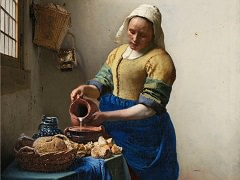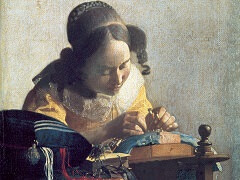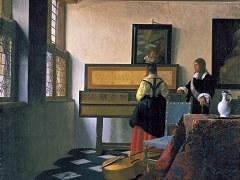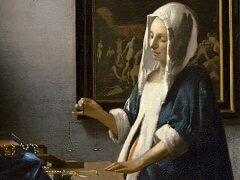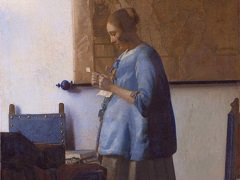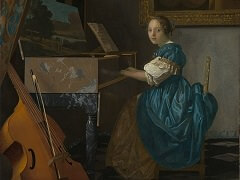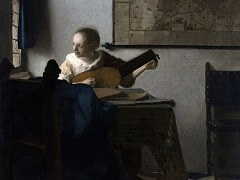Woman with a Water Jug, 1664 by Johannes Vermeer
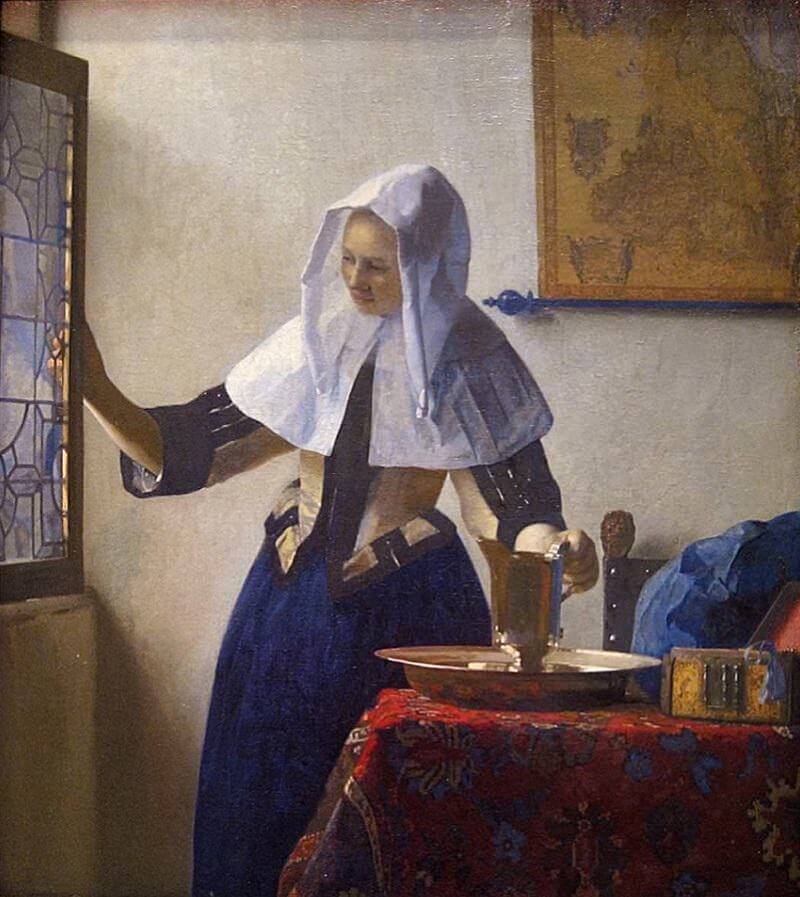
Vermeer focused many of his scenes on a female figure lost in thought while in the midst of a daily activity. He discovered in such quiet moments of contemplation, when one gazes outward but looks within, a window into an individual's spiritual nature. Here, the woman's reverie occurs as she stands near the corner of a room, holding the frame of a leaded-glass window in one hand and a water pitcher in the other. The woman is merely letting in the morning air as she tidies up, but she tidies up with a gesture as grand as that of a Delphic Sibyl by Michelangelo. The grandeur is of the essence, and not stylistically imputed. Vermeer had seen and remembered precisely such an attitude as the daily ritual which made his home a delight was being accomplished. Partially because of the fluidity of her pose, but also because of the gentleness of her expression and the serenity of the deep blues of her dress, she communicates a sense of purity and inner peace.
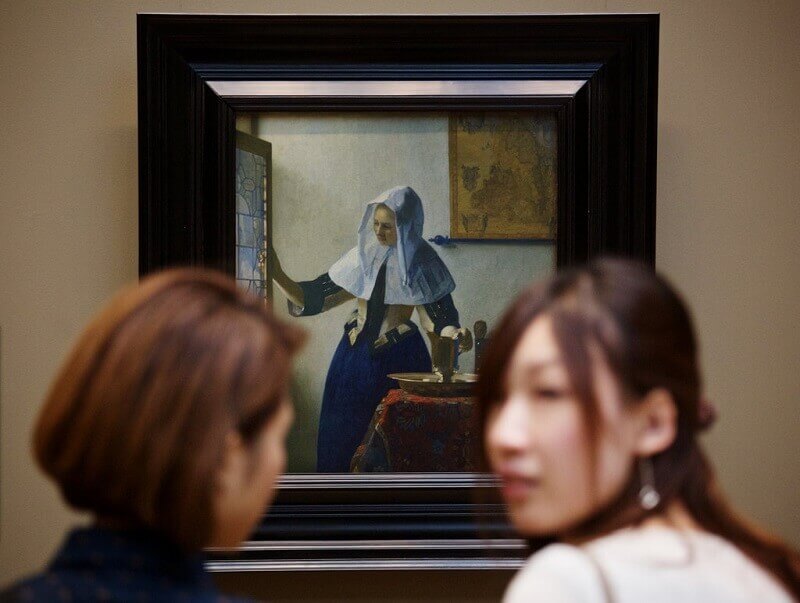
Vermeer, however, also understood the importance of the woman's environment for conveying mood. Radiant light, welcomed by her open gesture, floods the ordered and harmonious interior. He has carefully adjusted the patterns of wall shapes created between objects, as, for example, those under each of the woman's arms. These defined patterns help hold the woman's pose in place, giving it a sense of permanence, both temporally and spatially. He also included objects with specific symbolic associations, such as the water pitcher, which alludes to cleansing, and hence purity. Finally, he adapted his painting techniques to reinforce his thematic emphasis; the abstract blue patterns in the glass suggest metaphorically that the woman gazes outward without focusing on the objects before her.



